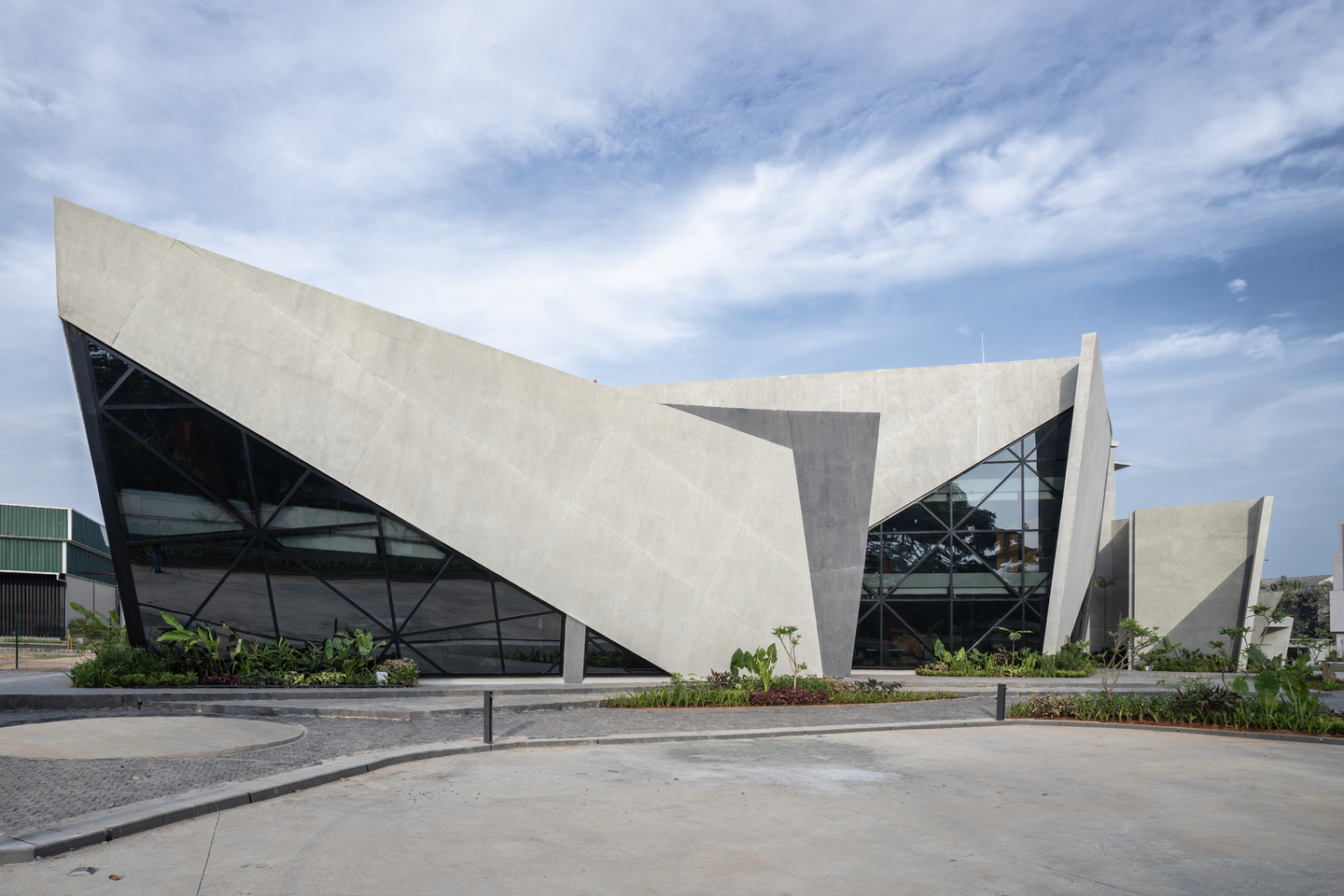
Kutch is home to several communities whose livelihoods depend on remote areas where they migrate seasonally. Pastoral cattle-rearing communities travel with their animals to grasslands, forests, and mangroves, while salt-pan workers and fishing communities rely on the intertidal zones. Most of these families, along with their children, live in these precarious zones in makeshift dwellings for 6–8 months before returning to their villages during the monsoons. This is when they celebrate festivals and marriages before returning to the coast.
This migration especially impacts children and their education. It is not feasible for them to continue studying in their villages, where they live only for about four months a year. To ensure that the children do not miss out on their education, the Yusuf Meherally Centre (YMC) has been running schools on the coasts. These schools, like their homes, are made of temporary, makeshift materials such as gunny bags, tents, and plastic sheets.
To assist YMC in their endeavour, Henning Larsen from Denmark, along with Mette Lange Architects, raised funds for a better building for one of the schools and helped design one of these ‘Moving Schools’ in collaboration with the Community Empowerment Unit of Hunnarshala Foundation, now known as two different entities—Aabhat and AINA. The school was designed with three classrooms and a common open space to be constructed in the coastal village of Bhadreshwar, in Mundra taluka of Kutch.
The site was located in a harsh saline environment where the sun is intense, the winds are strong and carry the salinity of the sea, and the seawater can erode any foundations. To address these challenges, the school’s foundations were protected with basalt stone pitching.
The walls and roof were made with cement-stabilised mud blocks sourced locally. The roof was constructed using a technique called ‘shallow domes’ instead of a concrete slab. Concrete slabs use steel reinforcement, which is unsuitable for construction in a humid and saline environment as it corrodes easily, reducing the building’s lifespan to less than 15–20 years in these regions.
Shallow domes, however, have minimal steel reinforcement, only around the perimeter. These domes also have a very shallow rise, about 10–12 inches for a 10×10-foot room, making the top of the dome usable, unlike regular bulbous domes. Discarded glass bottles were also used in these shallow domes to provide additional natural light within the room. The earthen construction would keep the interiors cool, helping with the harsh summers.
Additionally, small operable openings were provided at low heights to align with the children’s seating positions, who, in these schools, mostly study while sitting on the floor or using very low-height furniture.
Gallery:
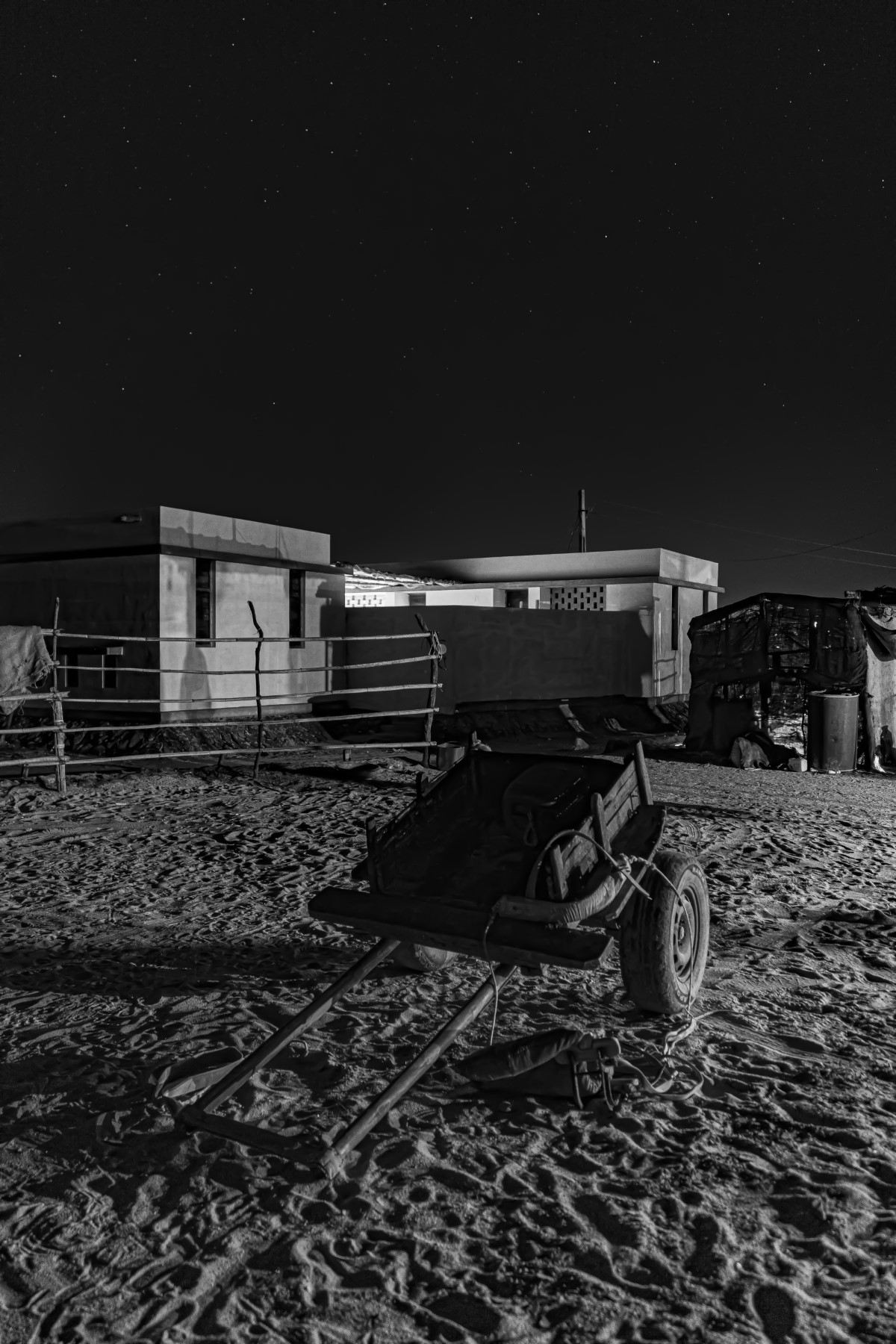



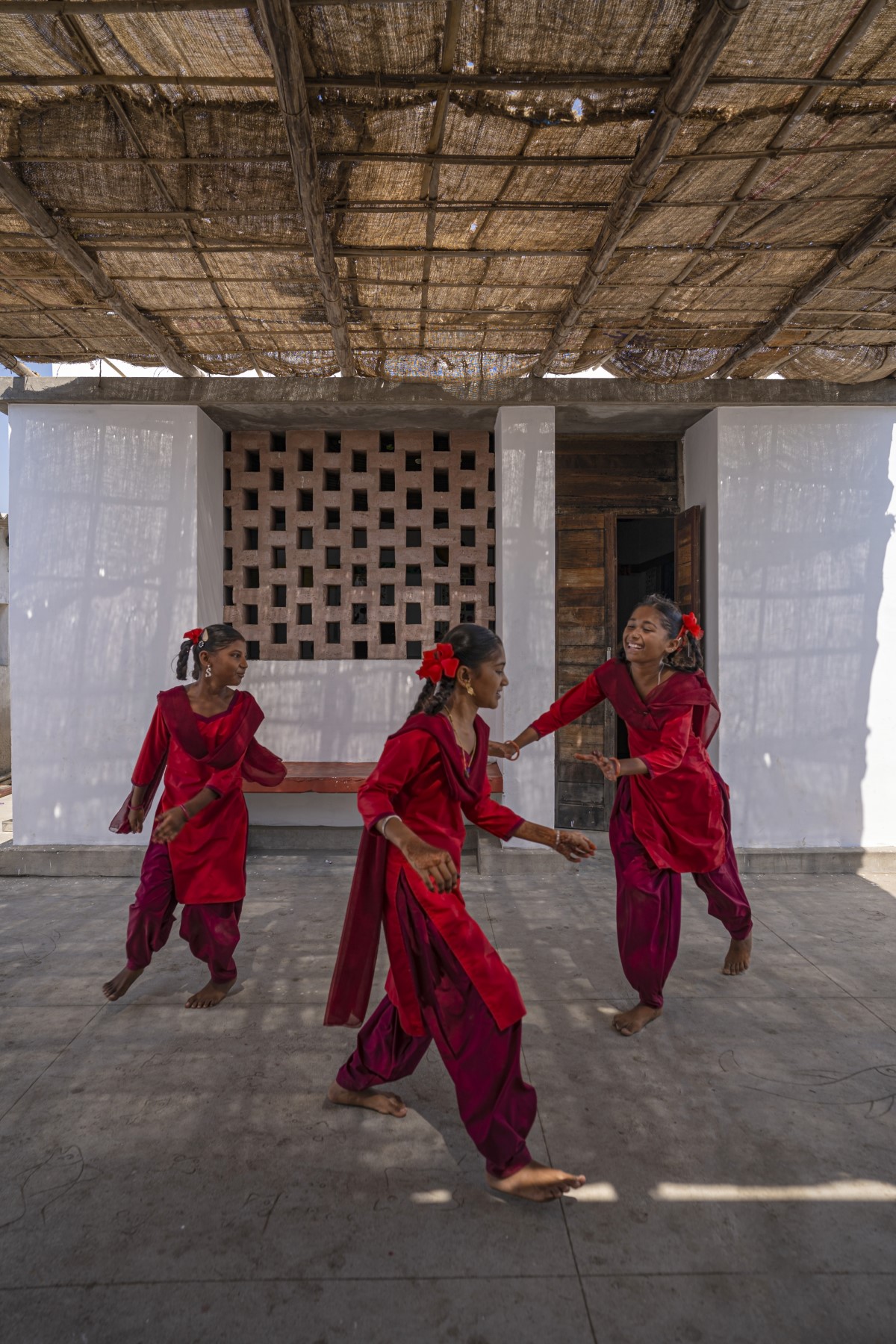

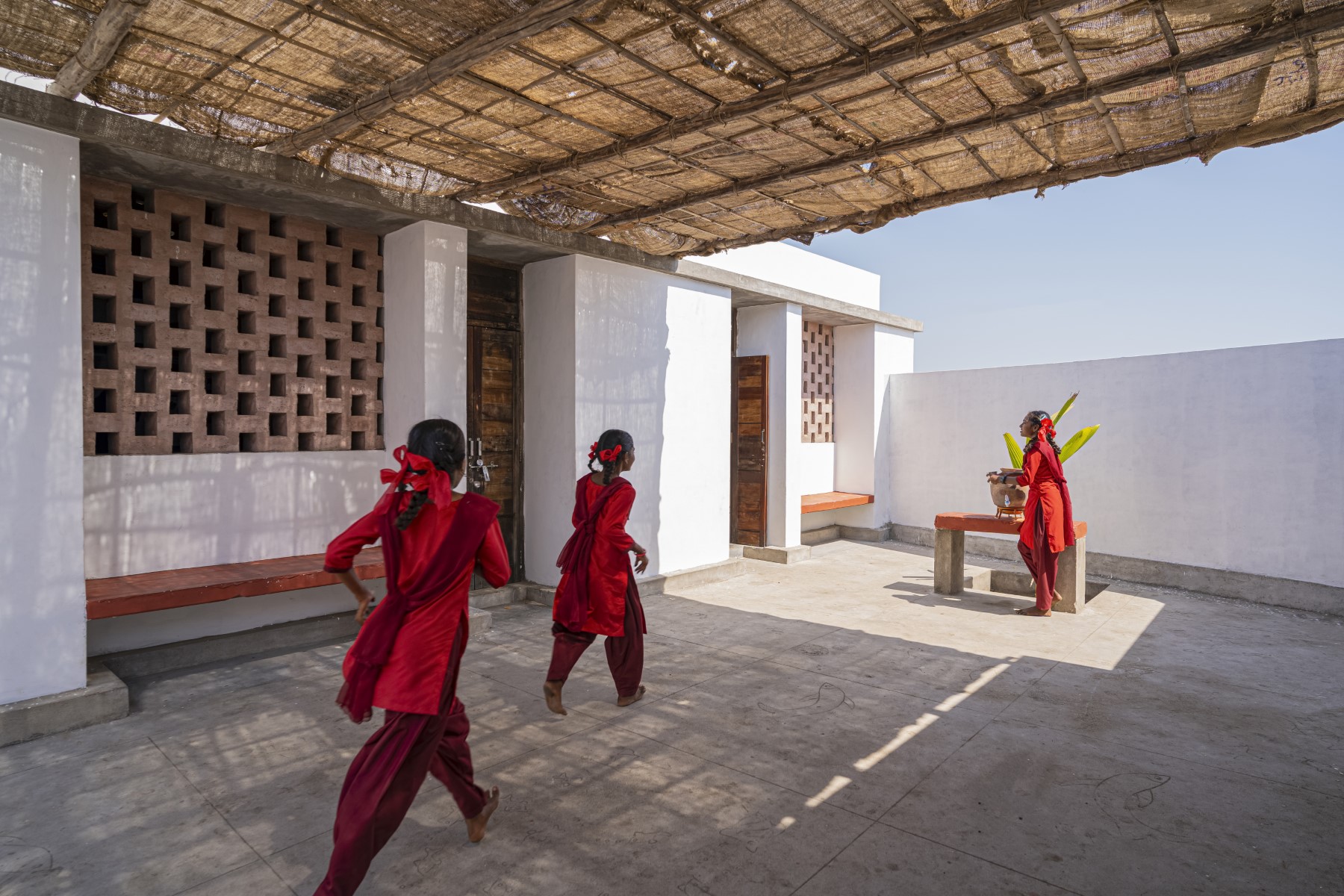
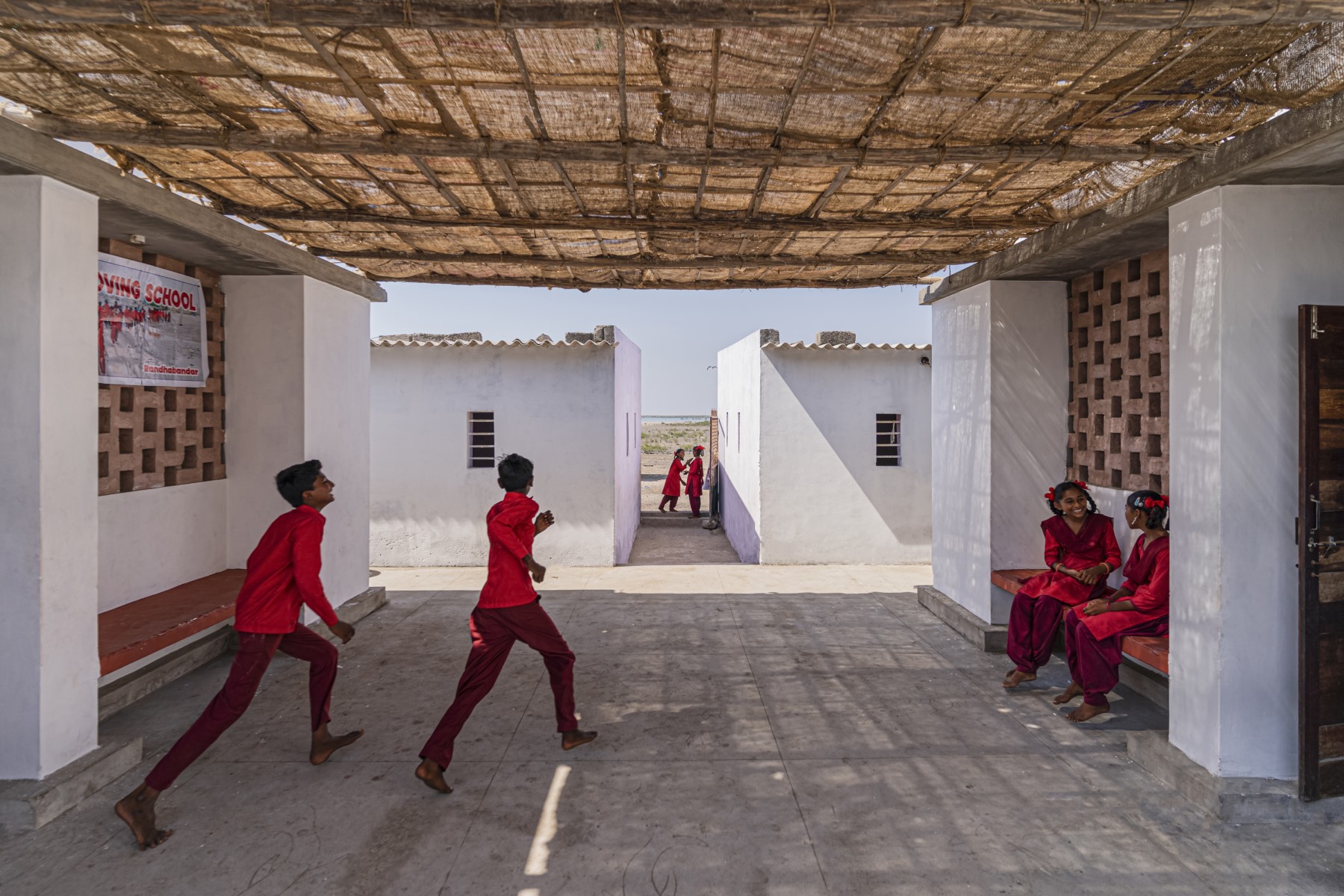



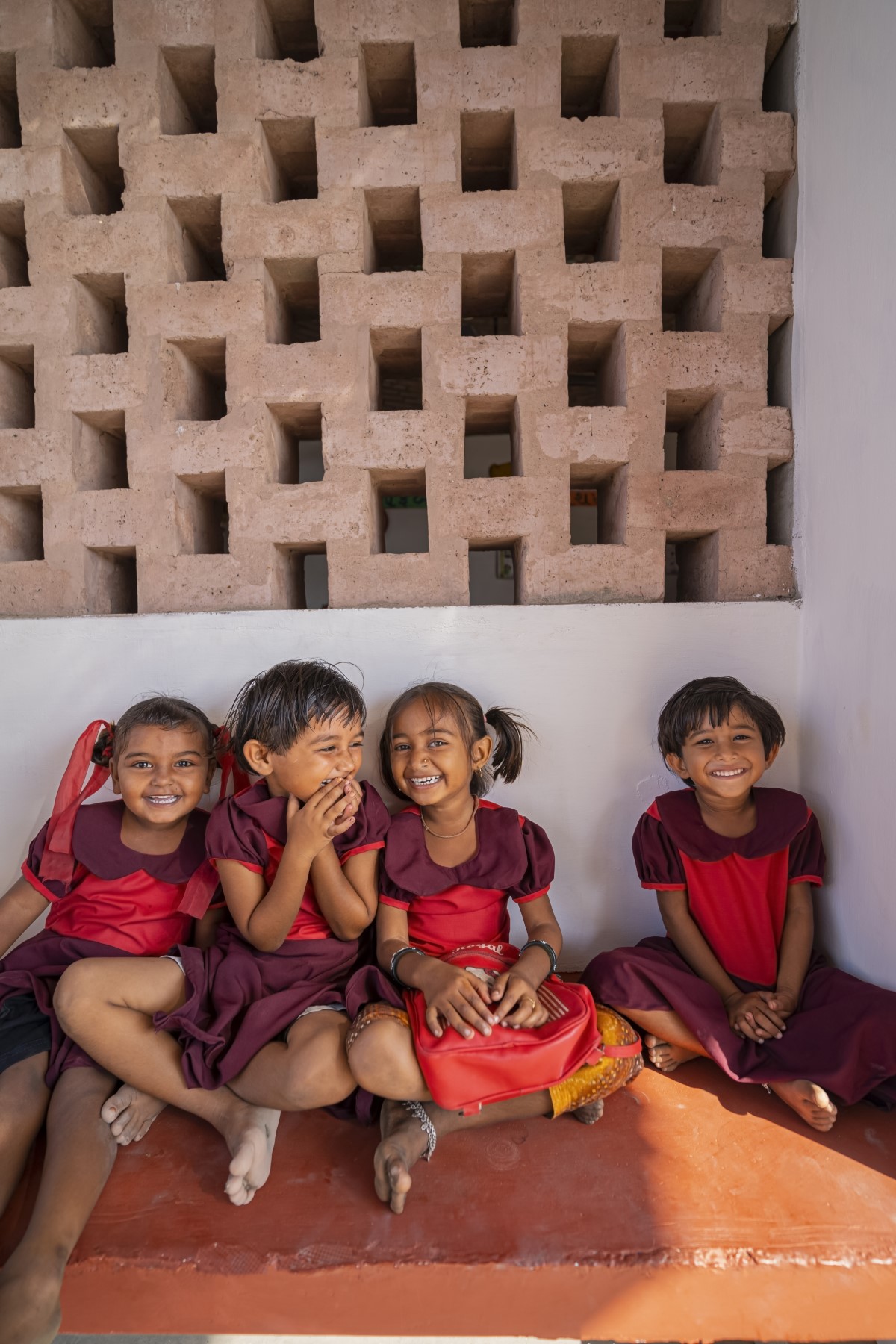


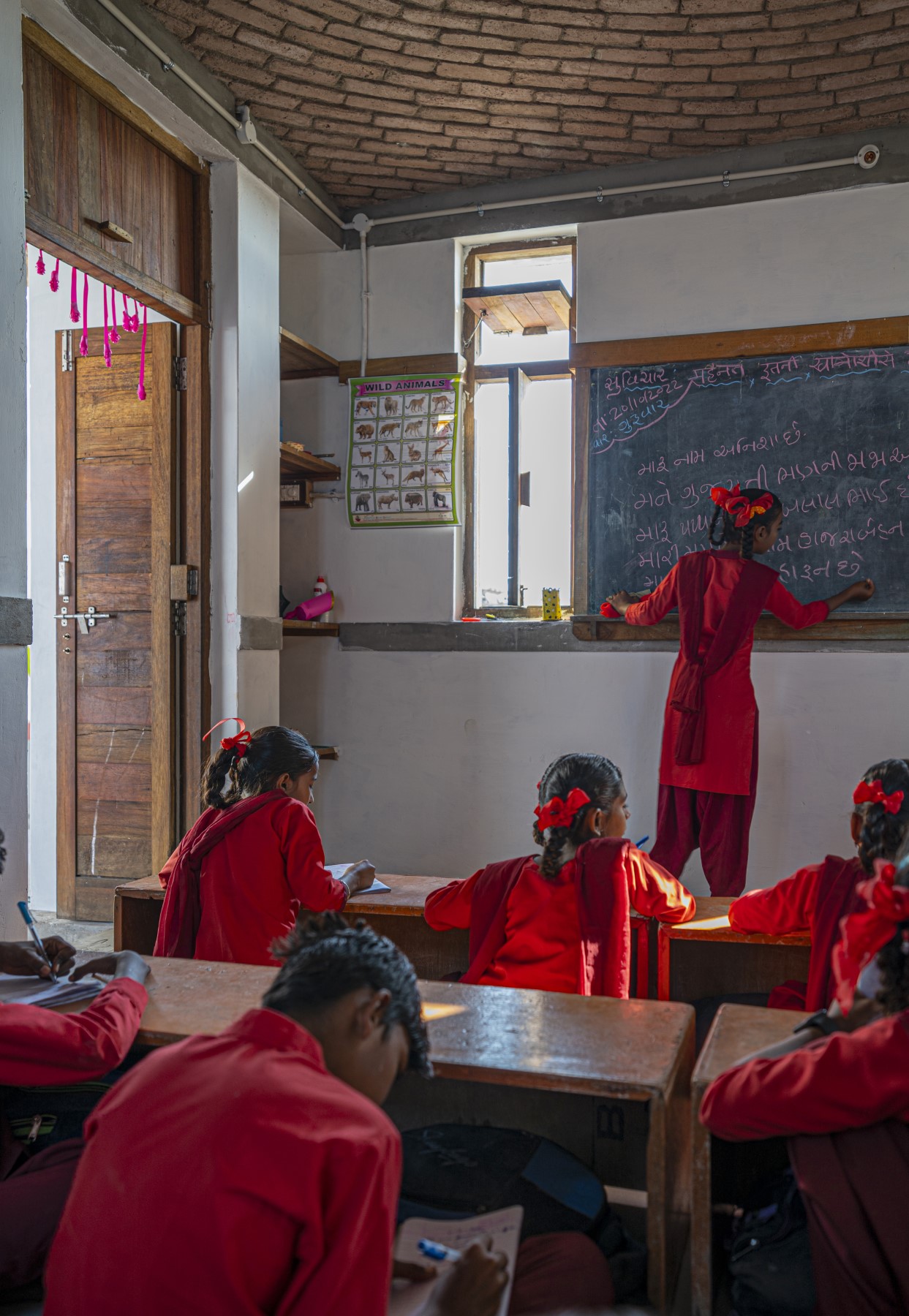

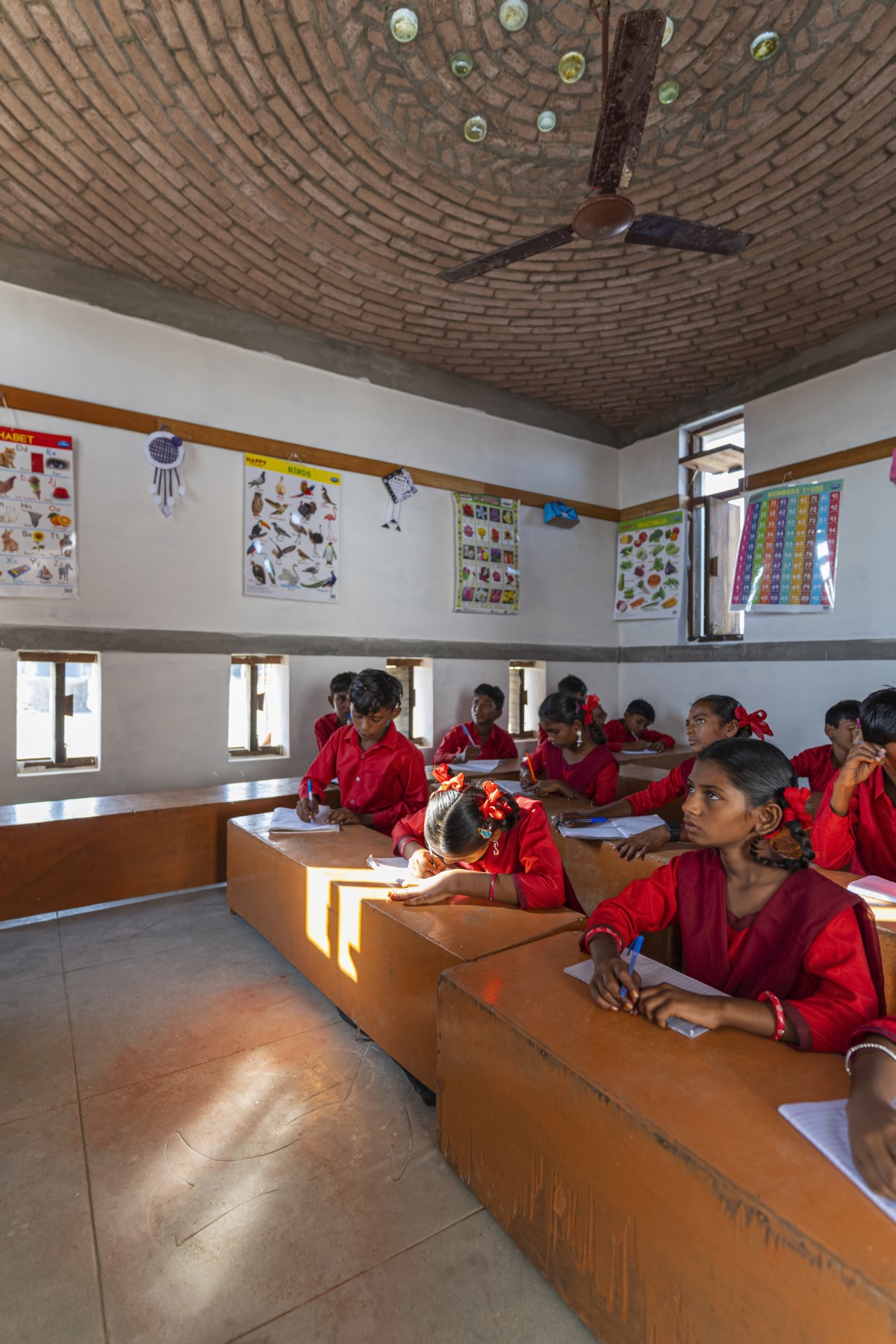
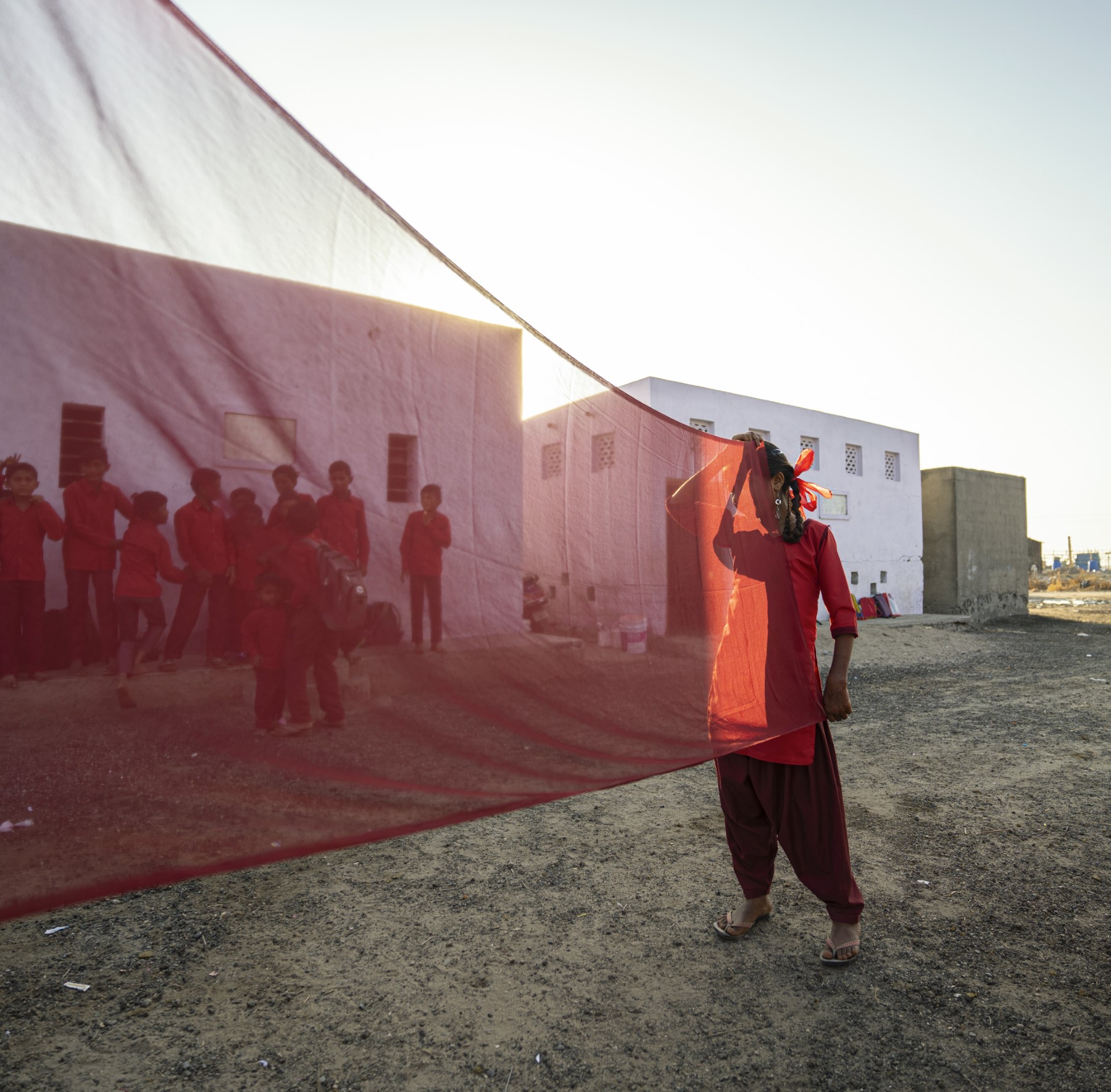


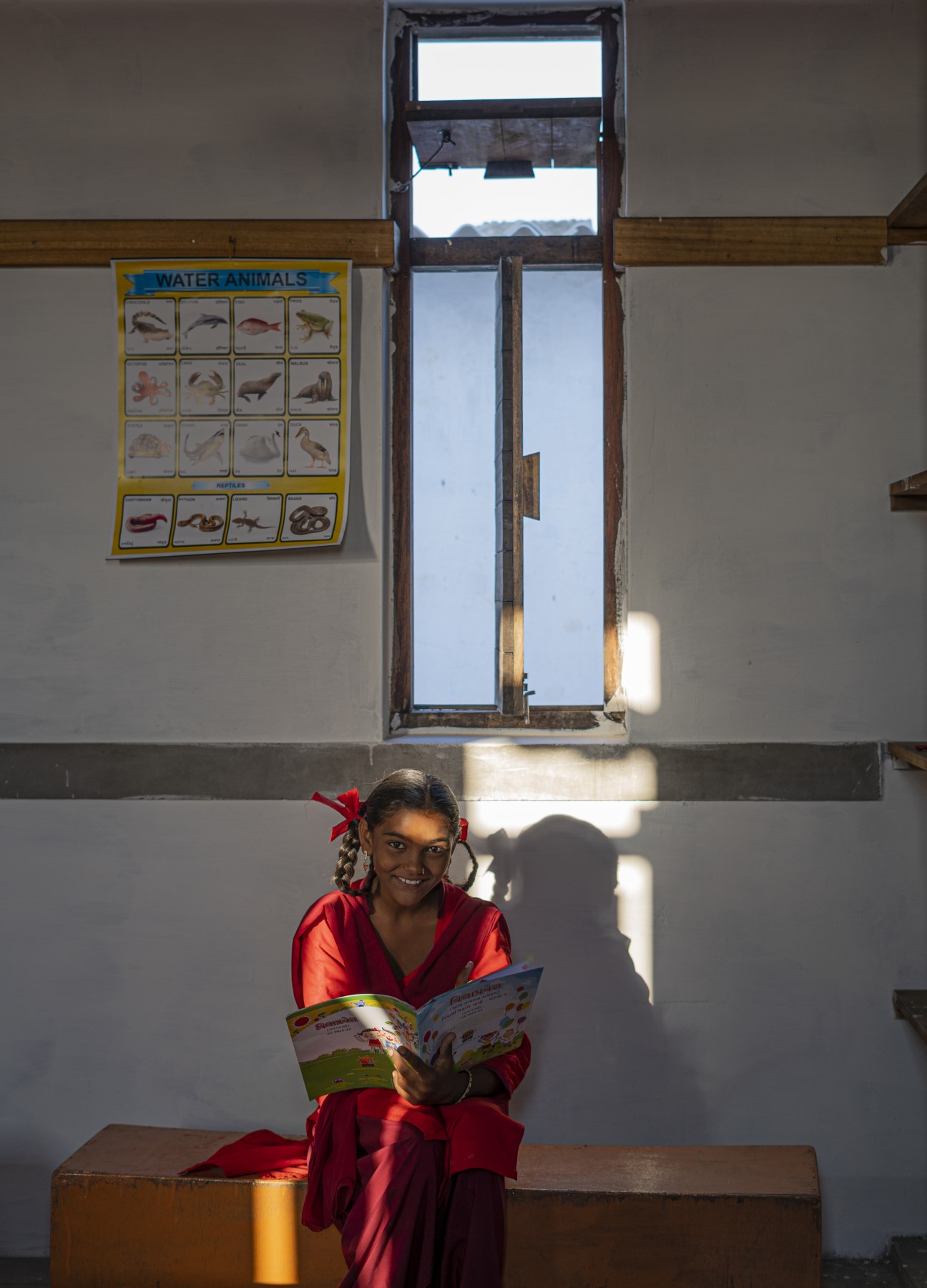
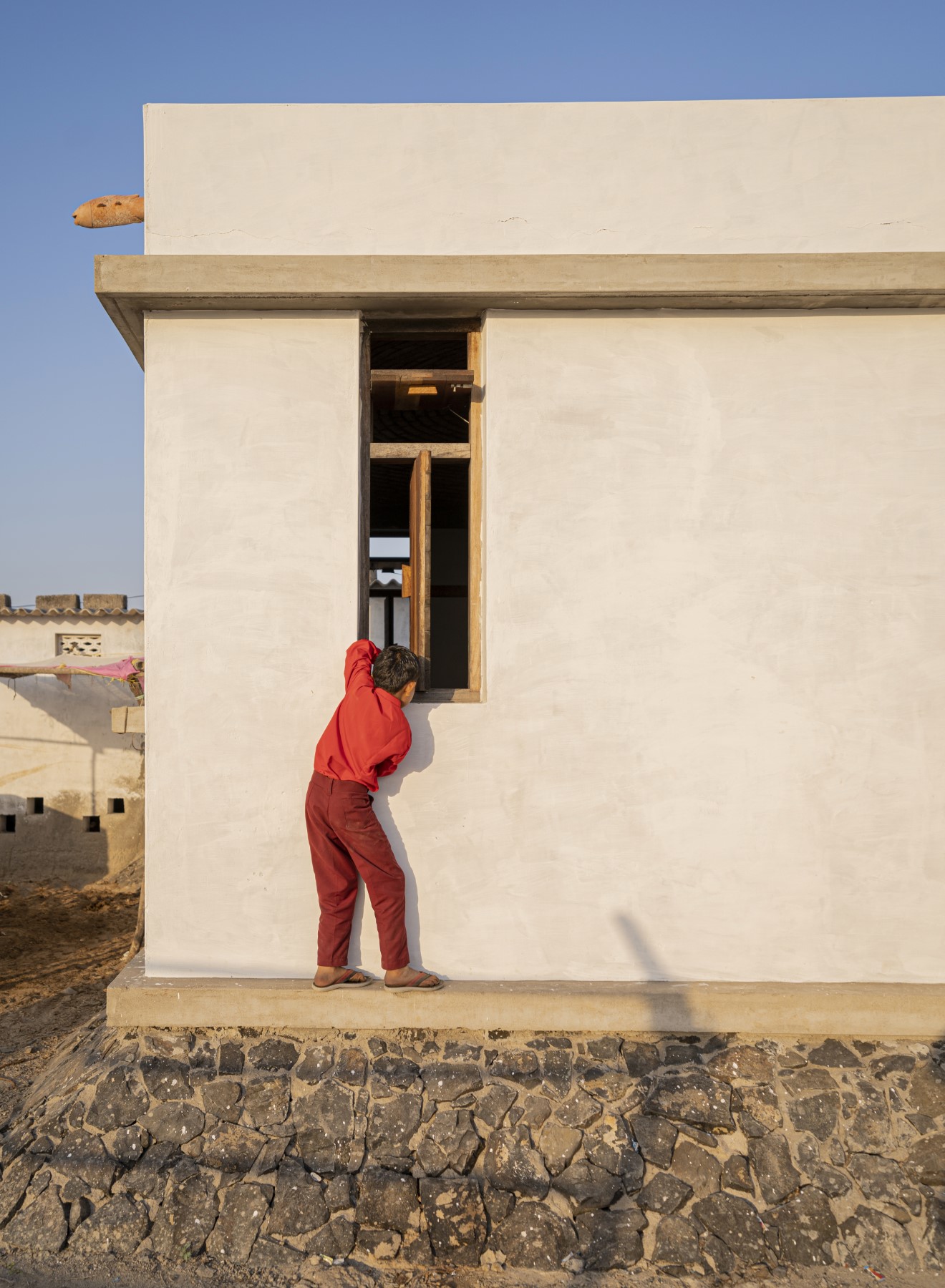
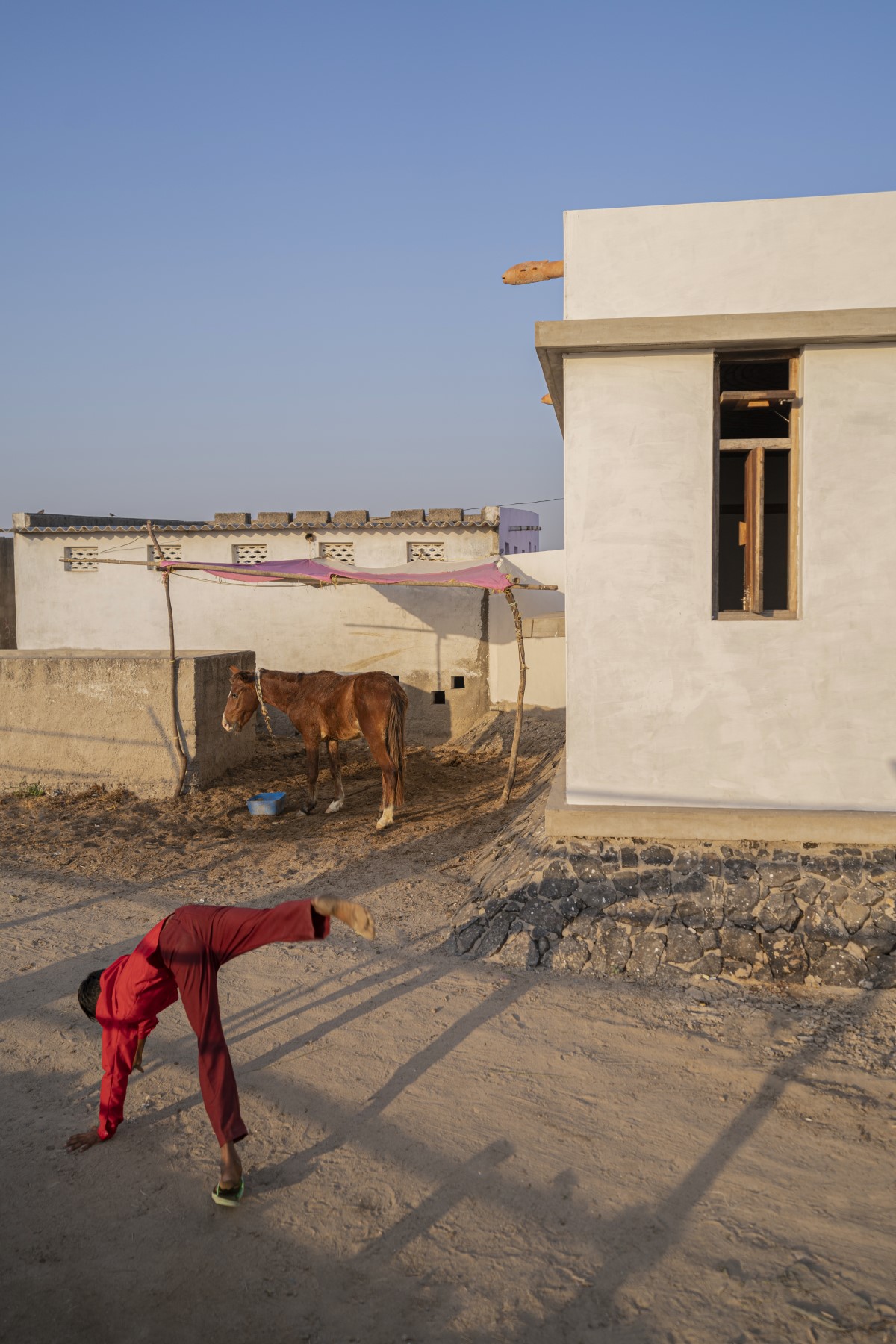



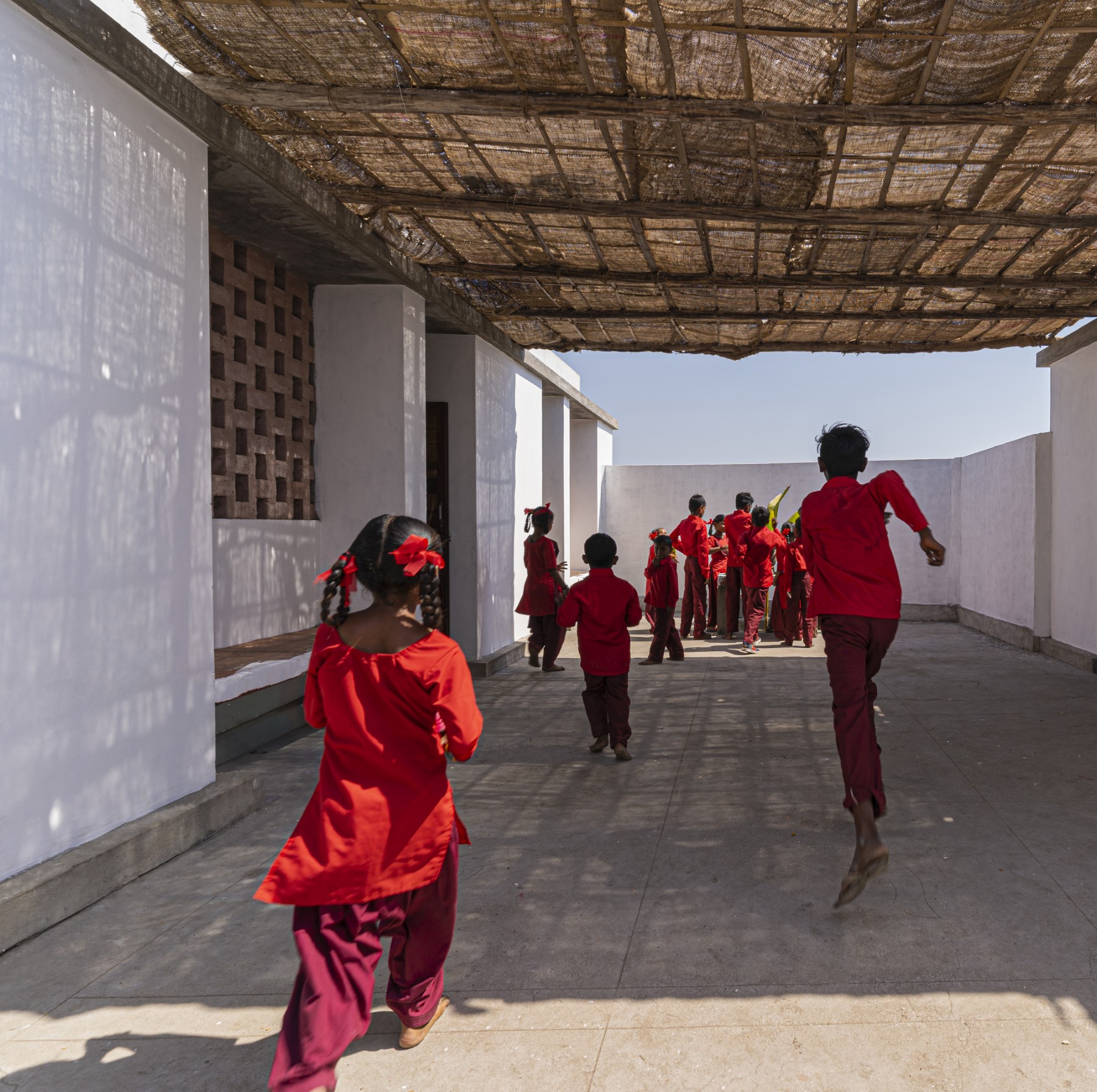
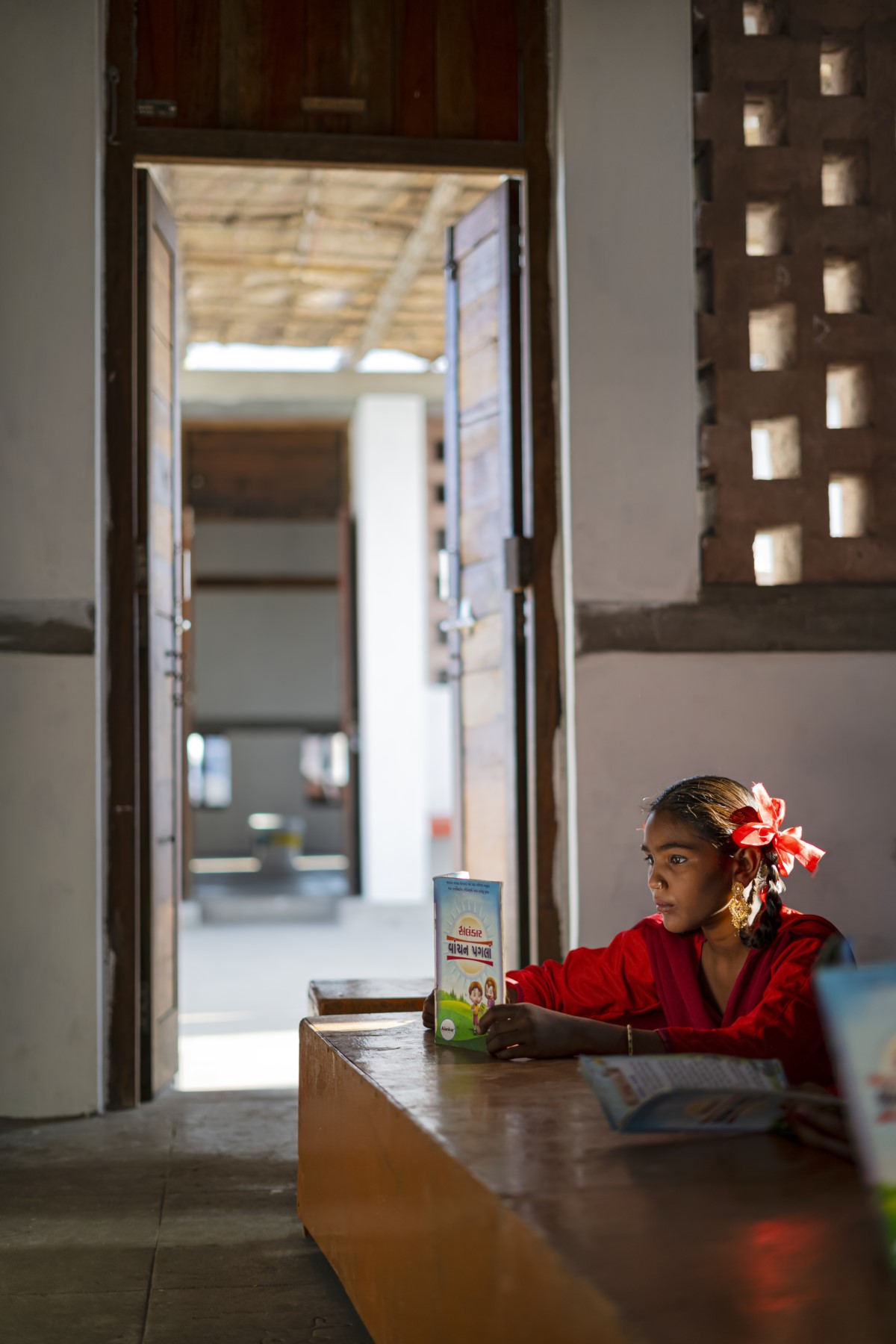
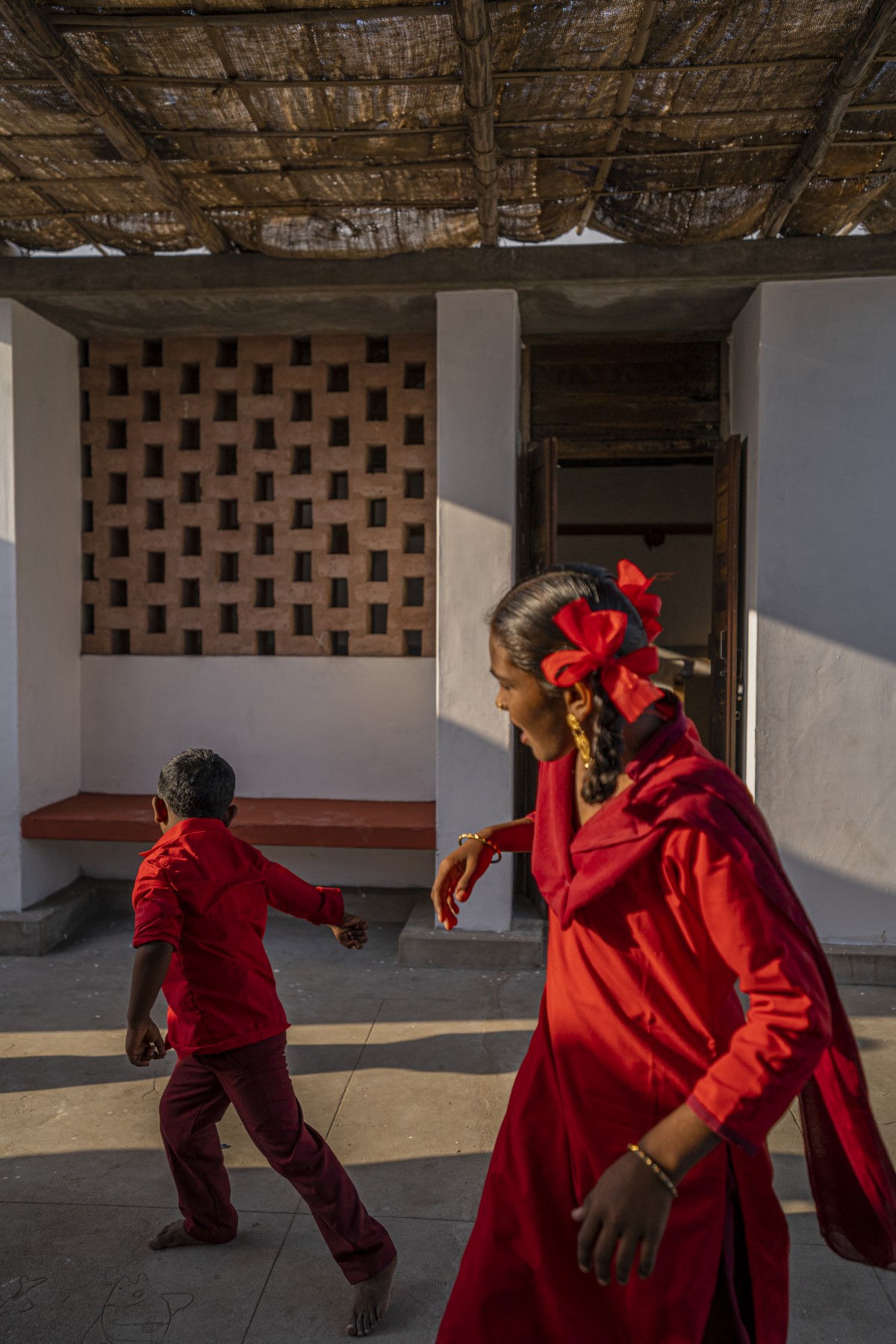
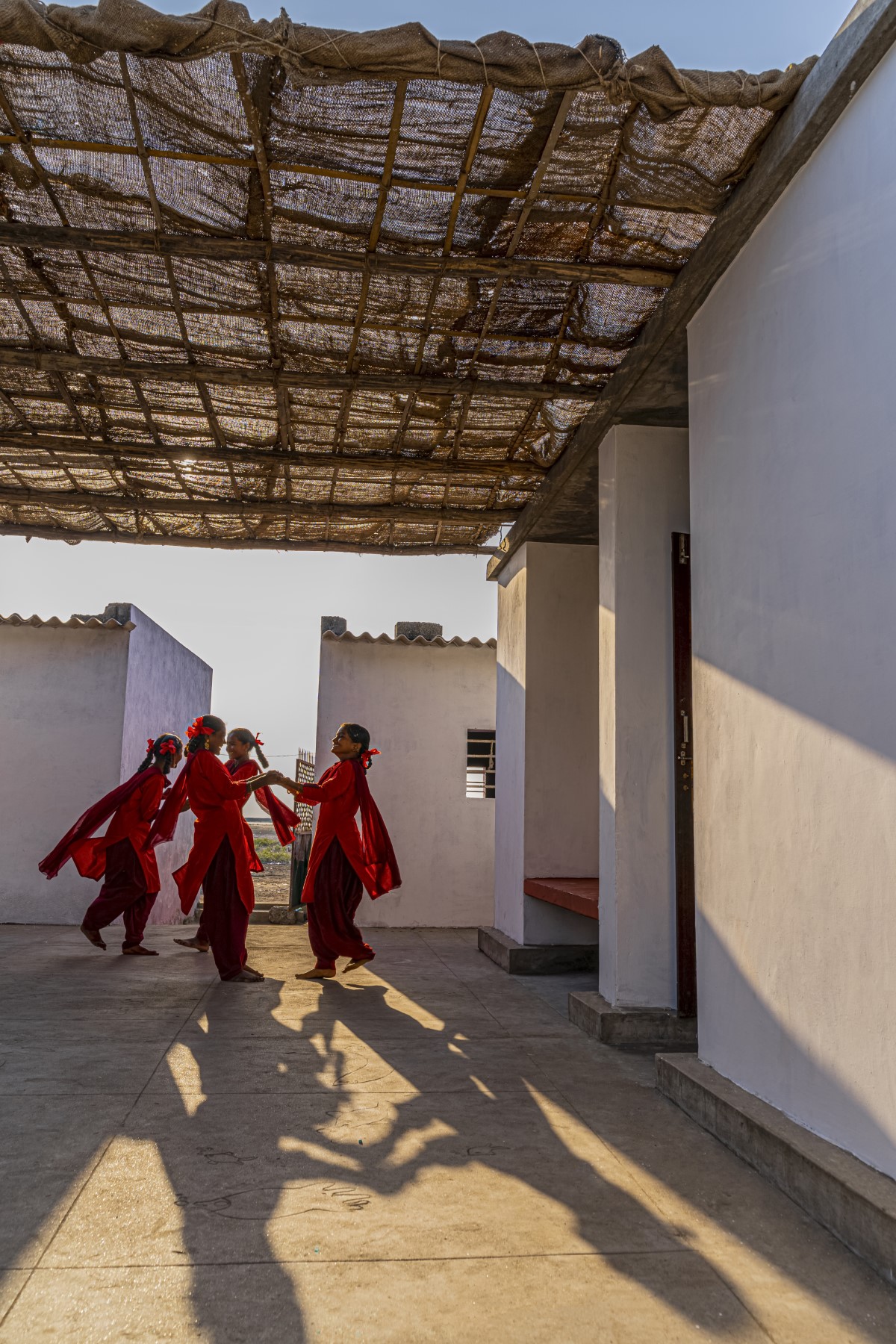
Project Drawings:



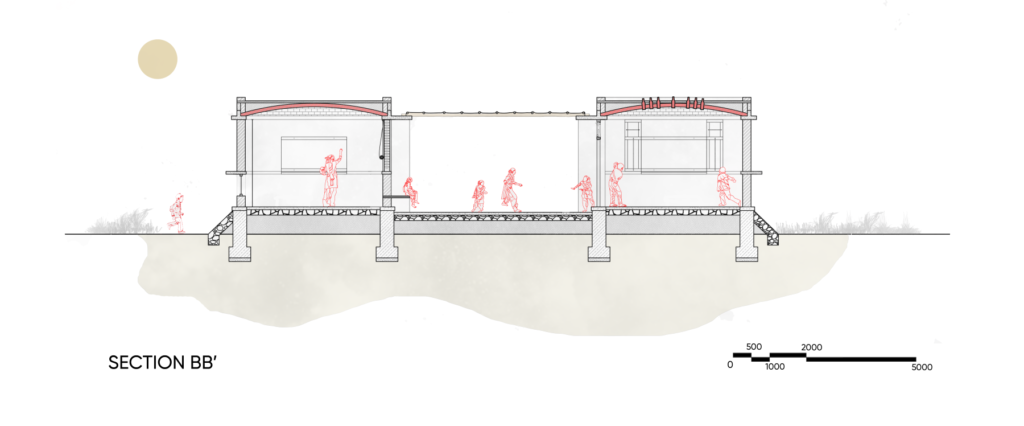
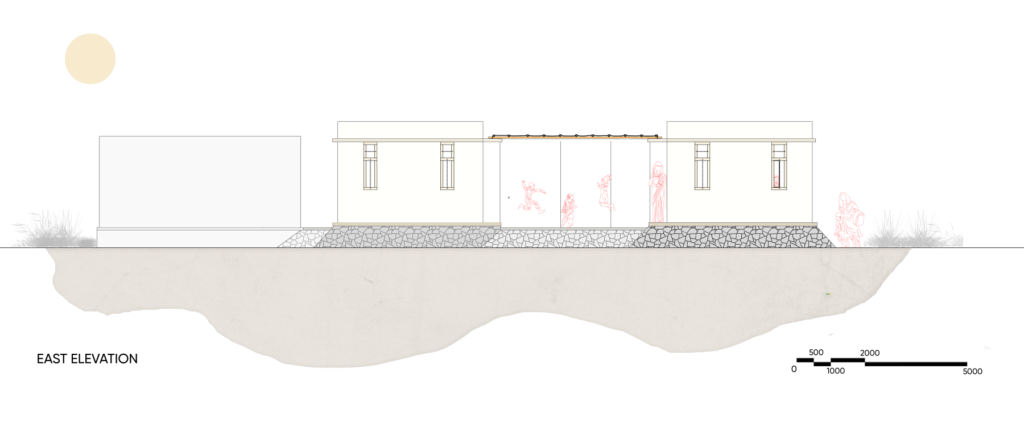
Project details:
Name: Moving School
Location: Kutch, Gujarat, India
Site Area: 6,350 sq. ft.
Project Area: 1,650 sq. ft.
Status: Completed (February 2020)
Client: Yusuf Meherali Centre and Mette Lange Architects
Project built by: Hunnarshala Foundation
Architects: Mette Lange Architects and Henning Larsen, in collaboration with Hunnarshala Foundation
Design Developments and Details: Sandeep Virmani and Dinesh Charan
Project Coordinator: Jignesh Bhatt
Structural, Materials, and Technology Support: Mahavir Acharya, Keyur Sarda, Rupesh Hurmade
Artisans: Bharmal Madan Kharet & Gagan’s Team (Block-making for the walls, and domes),
Mohan Danji Chavda & Amrish Paswan’s Team (Block Making and Masonry work),
Azad & Manish (Dome Construction),
Bab Bhai (RCC Work),
Rahul Jakhu Chavda (Miscellaneous Civil Works),
Ali Bhai (Painting),
Mohan Danji Chavda and Gopal Bhai’s team (Plastering)
Civil Contractor: Rahul Jakhu Chavda
Site Supervisor: Arvind Athu
Interns: Mohith Fernandes, Anusha Saraf
Photography: Nikhil Paliwal




